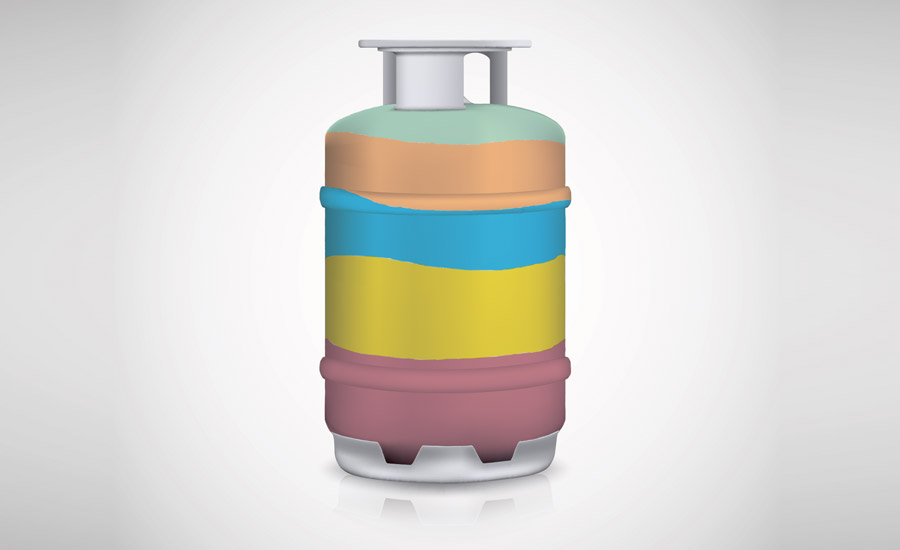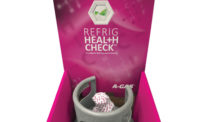In the wake of the U.S. Environmental Protection Agency’s (EPA’s) delisting from the Significant New Alternatives Policy (SNAP) program of certain hydrofluorocarbons (HFCs) in specific applications, HVACR technicians are likely to deal with an increasing number and variety of refrigerants in the near future. The ruling is widely expected to lead to a growth in the use of so-called natural refrigerant options, such as ammonia, carbon dioxide, and hydrocarbon (HC) refrigerants — such as propane and isobutene — as well as a variety of hydrofluoroolefin (HFO) refrigerants designed to replace HFCs.
The increasing number of options will make it more essential than ever for technicians to be aware of the hazards of mixing refrigerants and also to cautiously approach systems they’re servicing in case it contains a refrigerant mixture that has been adulterated — perhaps dangerously so.
“With so much attention being given to the global-warming potential [GWP] of HFCs, a number of companies have introduced low-GWP alternatives that are primarily HC-based compositions,” said Gordon McKinney, vice president and COO of Icor Intl. Inc. “These flammable refrigerants are being marketed as ‘natural’ refrigerants that can be purchased without a license and used as drop-in replacements for popular fluorinated refrigerants. However, HCs such as R-290 should only be used in systems and applications that are designed for use with flammable refrigerants and in applications that are EPA SNAP-approved.”
According to McKinney, individuals with little to no technical expertise in the HVACR field are purchasing these flammable products online and attempting to service their own equipment, which poses a number of serious safety and liability concerns. Converting a system designed to operate with R-22 to any alternative refrigerant requires a significant amount of technical expertise and instrumentation that very few homeowners possess.
“Many of these systems will be improperly charged and will require the services of a trained technician,” McKinney said. “And therein lies an even greater safety concern: If the HVACR service technician is not aware that the system has been charged with a flammable refrigerant, he could be at serious risk.
“Since R-290, in particular, is mass-produced and distributed to the general public for use in domestic appliances, this issue has the potential of causing widespread personal injury, property damage, or worse if more is not done to clarify the use restrictions for flammable refrigerants and rein in companies that are using misleading marketing tactics and circumventing EPA regulations,” McKinney added.
EDUCATION AND REPUTATION
Beth Sassano, refrigerants global market manager and brand protection manager, fluorochemcials, The Chemours Co., said training is an important precautionary measure to help educate the marketplace about the dangers of mixing refrigerants.
“We’ve been conducting contractor training for the past two years, explaining to them the dangers of purchasing counterfeit refrigerants where the container label does not accurately represent the refrigerant composition inside or where the refrigerant has not been registered for use in their country, and then, furthermore, pointing out the importance of buying from a reputable supplier of genuine products,” she said. “Refrigerants from Chemours have multiple security features, and we teach contractors what to look for to ensure they’ve procured a genuine product from us.”
Sassano also added the government is taking steps to ensure illegal products aren’t falling into the hands of unsuspecting users and being used in inappropriate applications. She said Chemours trains customs officials to watch for products entering the U.S. market that aren’t SNAP-approved, some of which can consist of mixtures containing HCs that haven’t been approved for use or lack ASHRAE designation.
“These products are not fit for use because they haven’t been approved or undergone rigorous testing,” Sassano said. “Because that falls under EPA jurisdiction as a violation of the SNAP program, whenever we find evidence of that we submit it to the EPA and they follow up on the situation.”
RISK AND RESPONSIBILITY
Technicians face the risks of working on systems that may contain mixed refrigerant, and they also bear the responsibility of working on systems safely to ensure they don’t leave an unsafe system behind for the next technician.
According to Art Miller, region 2 director of the Refrigeration Service Engineers Society (RSES), and Nick Reggi, international secretary/treasurer and region 16/17 director, RSES, technicians need to check unit labels for intended refrigerant type(s) as well as determine if any major work has been done to the system — such as a compressor change, evaporator replacement, or filter/drier being removed or replaced — which could all be an indication that the refrigerant may be contaminated. In addition, Miller and Reggi both advocate the use of a refrigerant identifier as a valuable tool for technicians.
“A knowledgeable technician will be able to identify most scenarios by using a pressure-temperature chart,” Miller and Reggi said. “Beyond understanding the basics of saturation of refrigerants — which probably holds true for many technicians — the use of a refrigerant identifier will need to become standard practice for many to ensure they’re aware of what the system contains or doesn’t contain.”
Miller and Reggi said portable refrigerant identifiers are readily available on the market and will identify a number of different refrigerant types. A basic identifier that works on a “yes or no” principle (for example, the refrigerant being tested is either is R-22 or it isn’t) is also available.
“Our industry will have to seriously consider the use of refrigerant identifiers as we enter the land of increased conversions — especially for R-22 and R-404a systems and, eventually, other HFC systems — along with the introduction of products that look and operate the same with new refrigerants,” Miller and Reggi said. “The identifier may become another tool technicians must have to remain safe and comply with EPA requirements when it comes to recovering, recycling, reclaiming, and destruction protocols.”
Miller and Reggi added that, although a technician might be at the mercy of a tinkering homeowner when it comes to dealing with a system containing mixed refrigerant, the technician should never be guilty of mixing. With today’s availability of local community colleges, technical institutions, manufacturers, and organizations that provide the necessary training to properly and safely install, service, and maintain equipment, there should be no reason for poorly trained technicians who would not be aware of the hazards of mixing, they said.
“Perhaps it’s time jurisdictions — whether it be municipal, county, state, or federal — further mandate and enforce licensing processes for the individual technician through both knowledge- and skill-based programs,” Miller and Reggi said. “Fluorinated refrigerants have allowed technicians to develop a number of sloppy and even unsafe practices, especially if they’ve never had the proper training. As the fluorinated refrigerant compounds are phased out, technicians are going to find that many of the ‘natural’ refrigerants are flammable and/or more toxic and may operate at higher pressures than the fluorinated refrigerants they’ve become so comfortable working with.”
Miller and Reggi concluded with a bit of Darwinism for technicians: “If technicians do not have the proper training or the proper tools to handle flammable, higher-toxicity, and higher-pressure refrigerants, perhaps their lack of knowledge and skill set will encourage them to pursue a new career and thus help move the HVACR industry toward a more proficient workforce.”
SIDEBAR: UNAPPROVED REFRIGERANTS POSE INJURY, FIRE RISKS
The U.S. Environmental Protection Agency (EPA) continues to warn homeowners and service technicians about the use of refrigerants that are not approved under the Significant New Alternatives Policy (SNAP) program.
The EPA is particularly concerned with propane and other highly flammable hydrocarbon (HC) gases marketed and sold as drop-in replacements for R-22 in home air conditioning systems that were originally designed for nonflammable refrigerants. In such cases, there is a serious risk of fire, explosion, and injury to homeowners and service technicians.
The EPA has issued several warnings to homeowners, propane manufacturers and sellers, home improvement contractors, and air conditioning technicians about the use of unapproved HC refrigerants often with 22a or R-22a in the name.
Not only does the unapproved use of HC refrigerants pose a serious risk of fire and explosion, it is also illegal. The EPA is actively investigating several companies that manufacture, market, or sell unapproved HC refrigerants as replacements for R-22. To date, the EPA has issued findings of violation to two companies alleging violations of SNAP program regulations and has entered into a consent decree with one of these companies. It’s also issued requests for information to several other companies.
The EPA calls on the air conditioning technician community to help spread the word about the risks of unapproved HC refrigerants.
For more information about R-22a, visit http://bit.ly/R-22a. For the EPA’s safety warning on the unapproved use of HC refrigerants, visit http://bit.ly/UnapprovedHCs. For the latest EPA listings of newly approved alternatives, visit http://bit.ly/SNAPapproved.
Information courtesy of David Donaldson, chief of the Stratospheric Program Implementation Branch in the EPA’s Office of Air and Radiation. Contact him at donaldson.david@epa.gov.
Publication date: 8/24/2015
Want more HVAC industry news and information? Join The NEWS on Facebook, Twitter, and LinkedIn today!








